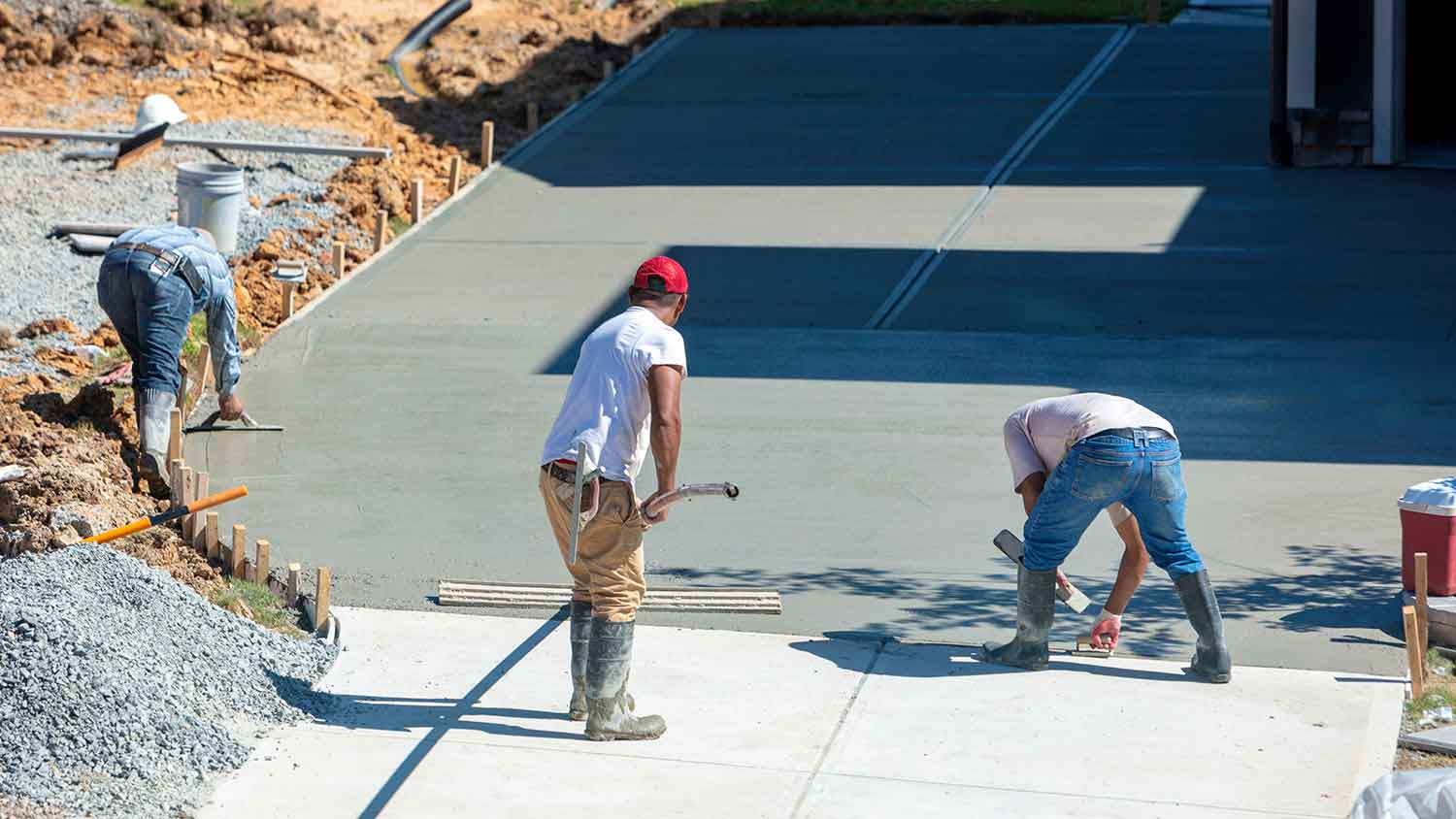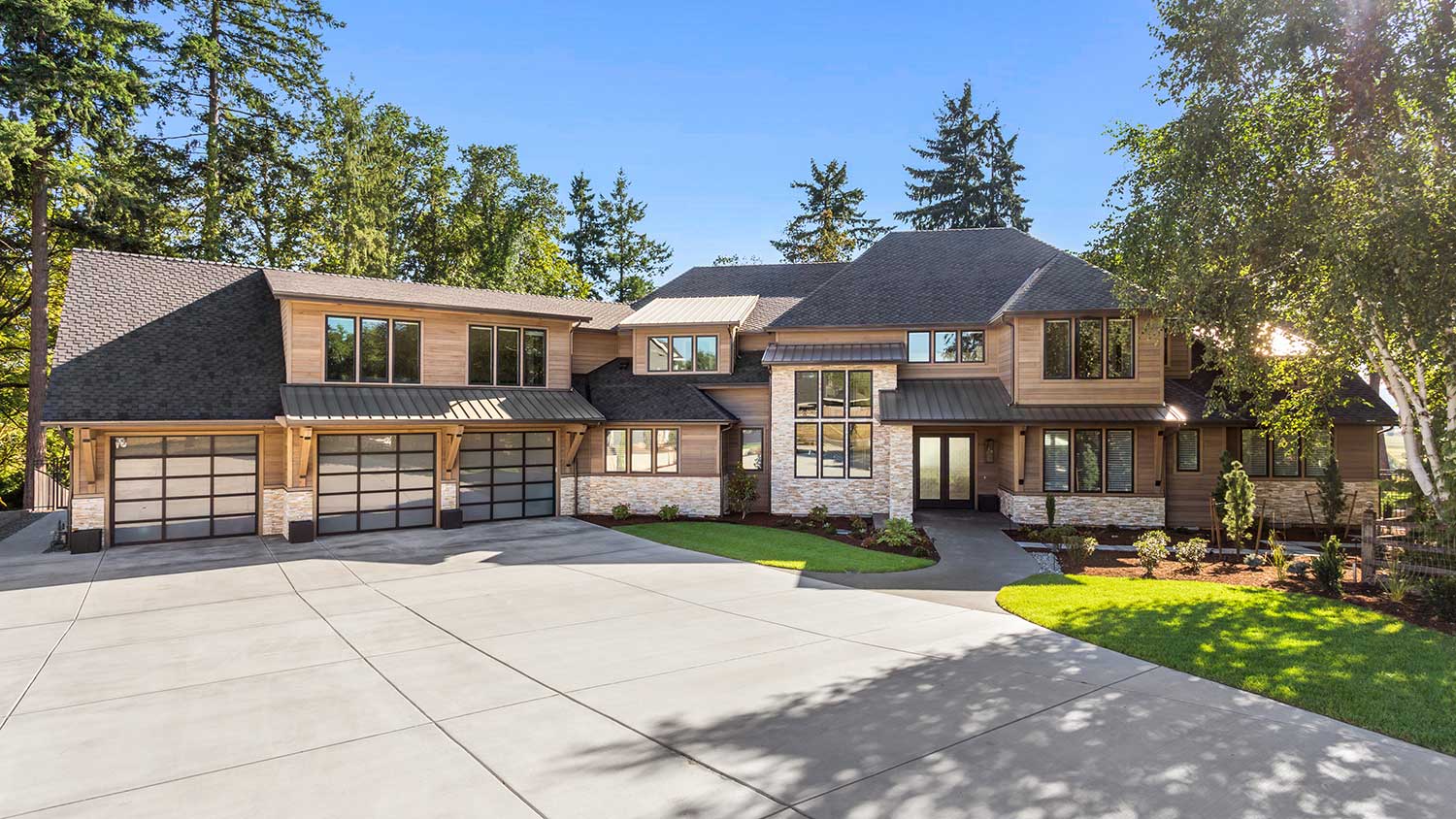
Discover the average concrete pumping cost, including key price factors and tips to help you budget for your next concrete project.
Achieving a perfectly smooth concrete surface can be trickier than you think


Concrete popouts are small cavities that form on the surface of your concrete slab.
Popouts rarely affect the structure of your concrete but can cause issues over time.
Either a physical or chemical reaction from foreign materials in your mixture causes concrete popouts.
After spending all weekend laying your new concrete driveway, small craters known as concrete popouts blemish the surface from top to bottom. This doesn’t mean you poured your concrete incorrectly—concrete popouts are difficult to prevent. They’re one of the most common concrete problems in the books, and it can take some careful shopping to find a mixture that won't leave you with a few repairs.
Concrete popouts are small, often cone-shaped craters that form on the surface of concrete slabs. Popouts can either occur during the concrete curing process or after a period of extreme snow and ice. The holes occur when aggregate breaks away from the mortar, leaving gaps up to an inch wide.
Most concrete popouts are barely visible at first glance, but some can be quite unsightly, particularly for indoor concrete floor finishes. While concrete popouts rarely threaten the slab's structure, they can encourage water and ice to enter the craters and cause more surface damage over time.
Concrete popouts either occur due to a physical or chemical reaction. In either case, foreign materials in your concrete mixture are the culprit. Locally sourced gravel across the country varies significantly. While construction concrete has high standards, other particles such as chert, coal, limestone, clay, and even wood can still sneak into the mix. High-alkali cement in your concrete can also cause problems. Let's take a closer look at both.
Physical concrete popouts—the most common type—occur with low-density aggregates that absorb water during the curing process. The particle expands more than its surrounding aggregate, causing it to break free from the surface of the slab and take mortar with it. While this often happens just after pouring concrete, it can also happen after frequent freeze-and-thaw cycles in the winter.
While far more subtle than physical popouts, chemical concrete popouts stem from high-alkali materials in the mixture. High alkalinity in the concrete, often from cement or other reactive aggregates, can react with silica and form a gel. The gel then expands when it absorbs water and breaks away from the mortar.

Remember that some concrete popouts will likely occur even when a professional pours your concrete. The only way to truly avoid popouts is by sourcing concrete without unwanted materials. In many cases, you will need to import specialized sand or concrete that meets a higher standard based on its location. While this will raise the price of your concrete slab, it will also decrease the chances of blemishes.
Additional tips for decreasing concrete popouts include:
Ordering non-reactive concrete with low alkalinity when possible.
Lowering the aggregate size to keep highly absorbent aggregates from breaking off.
Lowering your concrete slump—or water-to-cement ratio—as much as possible.
Working with a local concrete company that can source high-quality materials.
Pouring concrete in temperatures between 40 and 60 degrees Fahrenheit.
Avoiding pouring concrete in the winter unless you have the help of a professional.
Sealing your concrete after curing to prevent future popouts.
Let all the bleed water evaporate before finishing your concrete. This can take anywhere from 20 minutes to four hours.
If the popouts are large enough to warrant repairs, it's often best to hire a concrete company to take a look. They will be able to identify the cause of the popout and whether it was a physical or chemical reaction. Once they've done this, they will often chip out any remaining problem material from the hole and then fill it with either an epoxy, polyurethane, or dry-pack mortar.
From average costs to expert advice, get all the answers you need to get your job done.

Discover the average concrete pumping cost, including key price factors and tips to help you budget for your next concrete project.

Discover how much concrete walls cost based on factors like their size, material, location, design, and local labor rates.

Looking to spruce up your home’s exterior and add some value? Use this concrete walkway cost guide to estimate the price of installing new paths.

Concrete resurfacing is a much more affordable option than replacing a slab. Learn how long concrete resurfacing lasts and if it’s a better option for you.

Pervious concrete can solve drainage issues and provide environmental benefits. Learn more about pervious concrete to decide if it’s right for your home.

Discover the average driveway resurfacing cost, key price factors, and tips to save money on your project. Get expert insights to plan your driveway resurfacing.